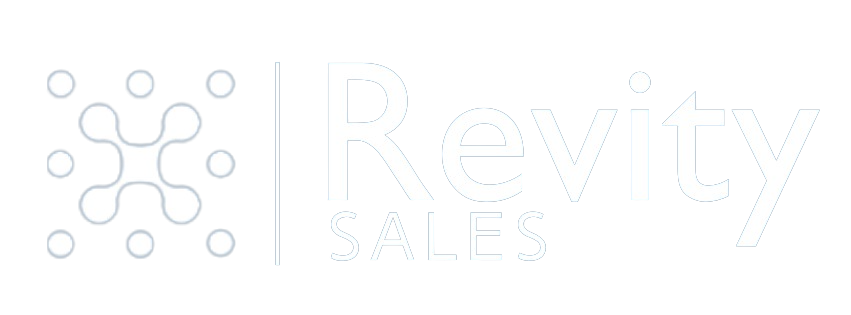How Difficult is Building an SDR Team?
It May be Harder than You Think.


February 24, 2022 | Written by Tom Callinan
Starting a New Chapter
Early in my career, I wanted to be at the highest level in every travel rewards category: Executive Platinum, Ambassador Elite, Globalist. Achieving these levels provided me with upgrades throughout my travel, whether it be first-class seats, suites at the hotel, or access to clubs. However, depending on your perspective, travel is either a perk or curse of being in sales or an executive customer-facing position. The thing you are probably giving up as you rack up the “thank you for being an Elite Member” greetings at check in, is time with your family.
After decades of leading technology companies and earning all of what I now call the “badges of dishonor” (even some unpublished levels for us zealous travelers), I decided it was time to settle down and work close to home. I looked to invest in a tech company that supported local businesses and didn’t require extensive travel, but after comprehensive research and outreach with a friend I used to work with, I invested in a sales-as-a-service consulting company: Revity Sales Consulting.
How hard could this be? I’ve led a sales organization with 1,300 sales professionals producing $1.4B in revenue. I’ve grown public companies, PE sponsored companies, and private companies consistently faster than the market was growing. The infrastructure for sales-as-a-service is well developed with multiple data companies, CRM platforms, campaign tools, dialing tools, and automation. You could spend a week attending video demos of the campaign tools!
I believe the most important responsibility of a manager is developing each team member. With all my sales experience, combined with my exposure to buying various products and services as an executive and entrepreneur, I had a lot to offer our employees to help them develop.
Most importantly, I knew that no matter what sales organization I led, one of the most significant issues was not having enough in our pipeline. That single issue was also a contributing factor to another big issue: not being able to achieve a sales staffing plan. If we had more leads, we could reduce our turnover and be more attractive as an employer.
If Revity reached out to me, I’d hire them for outsourced SDR/BDR expertise (and I was always a tough customer). As I made the investment, I was 100% confident that there was a substantial market for sales-as-a-service, and after leading Revity for 10 months, I am even more excited about the market size for our services and the benefits we can provide to our clients.
Paving the Way
Foremost, I set in place some principles that would guide our company:
1. We’d create a professional work environment where everybody was respected. Young sales teams can become like frat houses, and that wasn’t going to be our culture. We would have mutual respect for each other.
2. We’d pay a fair salary, generous PTO, and good benefits so that our employees weren’t overly stressed, and we could attract top-level employees. We’d work hard while in the office, but everyone would have ample time to recharge.
3. We’d focus on developing each employee. While they are here, we want them to get better at their jobs every day. We want our employees to stay with Revity if they wish, but more importantly, if they leave, we want them to feel as if we helped them build a strong foundation for their careers.
4. We’d all learn together. We believe that not making mistakes means we aren’t trying hard enough or challenging our employees, yet making the same mistake means we aren’t learning. We expect mistakes every day; we just want those mistakes to be different than yesterday’s mistakes.
5. We’d deliver exactly what we promised our clients. We would not relax our definition of a BANT qualified lead if we struggled on a campaign, and we’d focus on outcomes: true appointments (not activity, calls, or emails). We’d overcome every obstacle put in our path to ensure our client’s success.
Morgan, my partner, had built an email marketing company for small B2B businesses. He was very focused on success and was doing well. My role was to pivot the company to concentrate on sales-as-a-service with outsourced SDRs/BDRs making calls and leveraging email, LinkedIn, and other touchpoints to get BANT qualified leads for mid to large tech companies. Revity is the third company I owned, so entrepreneurship wasn’t new to me. I had successful exits with both previous companies, so I overcame obstacles to scaling a smaller company. At this point in my life and career, I also had the money to invest, so we didn’t need to bootstrap.
Learnings Along the Way
You need a definite model for a successful SDR/BDR.
We started to hire SDRs: Early career sales candidates that were smart and articulate. I had the primary responsibility to train and develop the team as Morgan focused on business development and was the primary point of contact for our technology stack, given he had been using it for four years. Morgan and I worked together to develop a target list of companies as well as the correct titles to target.
Interviews in my recent history were for division presidents, SVPs, and VP level folks that had deep work experience you could dig into, and you could understand their approach to people, projects, and achieving results. I hadn’t interviewed recent college grads in 30 years, and I had to relearn some things I had forgotten.
At first, I was focused on intelligent, articulate candidates that could describe their experience around some fundamental questions, such as why they chose the college they graduated from and what classes they liked most and least. I quickly realized that I had missed a major characteristic for success in sales—competitiveness.
I adapted, and rather than hire that 3.8 GPA from the second-tier school, I started to hire the 3.2 GPA graduate from the second or third-tier schools that had controversy or evident competitiveness in their history. They didn’t need to be a D1 athlete, but they needed to demonstrate a competitive spirit somewhere, somehow. Even more important is that they had a competitive attitude combined with a history of overcoming obstacles. Overall, I became more open-minded, broadening candidate criteria, and I sought those with advantageous traits to be an SDR.
Our new approach worked, and we started to build a robust group of SDRs that wasn’t turning over. We also began to get clients who hired us for our sales-as-a-service offering, so we had the opportunity to deploy these SDRs.
Despite the multitude of companies selling lists, you need to invest time and resources to have an effective list.
At Revity, we clearly understand that selling technology requires us to understand the business case and connect with high-level executives to get them to discuss their current situation and how the solution we are selling addresses their pain points. Suppose the prospect’s IT team spends 100 hours a month managing applications, and we have a solution that can automate the application management. In that case, we need to understand what applications within that vertical require the most time, get in touch with the appropriate decision-maker, and be capable enough to get them talking about how much time their team spends on that application, so we can suggest there may be a better approach and book the appointment. It all sounds simple with the correct solution education, but the list, which is what you’d think is the simple part, becomes a major issue.
We buy top-tier lists and pay for that opportunity. We also get decision makers’ email addresses, direct dial, and most of the time, their cell numbers. We can download this information by company, geography, and title, which seems straightforward. The issue becomes that big companies can have dozens of employees with the same or similar titles. Given that each of us completes our own LinkedIn profile, the job description could be exaggerated, minimized, empty, or overly detailed. In the aforementioned application management example, we may be targeting the VP of IT infrastructure, DevOps, Applications, or the CIO. Each business unit or geography may have executives with these titles. Heck, there might be 10 executives with the title of CIO if the company is big enough (each business unit).
It quickly became evident that unless you’re targeting companies < $300M in revenue, there is manual work involved in selecting the people you’re going to focus on. We added a data analyst who could start with downloading the titles, then conduct research before we loaded the information into our CRM tool to initiate outreach. It certainly isn’t productive to have an SDR researching to determine the right people to call when they should be making the calls.
You might ask, what’s wrong with calling a few extra people? It kills productivity. If our client is focused on selling a solution to the executive level in companies with revenue > $1 billion, each SDR averages 85 calls and two connects per day. Yes, two connects per day. If half of those are the wrong contact, it is demoralizing for the SDR that two connects is effectively one, which is not productive for our clients. Even when you’ve refined your list by doing manual research before turning it over to the SDR, some contacts are still not the correct decision-makers.
As a comparison, when calling executives in < $50M companies, an SDR averages 110 calls and eight connects per day. Less time is spent researching the company and person, and in smaller companies, there is a higher probability of the person you’re calling being at their desk or being in a position to answer their cell.
The substantial learning was that getting the correct target list of prospects isn’t as simple as buying the names and downloading them into your CRM system, no matter how much you’re willing to spend on the list.
An SDR needs a great deal of coaching.
It would be challenging to start an SDR on an enterprise-level sale. No matter how well you train them, they need to get on the phone and experience connects to truly execute and learn. With small accounts, you can utilize a script to teach the SDR the content and tone, and anticipate the three to five objections they’ll primarily hear. If the SDR is connecting 8+ times per day delivering the same script, you have a lot of examples to coach. By the end of week two, they should be pretty good at booking appointments on small accounts.
After a couple of months of working on small accounts, they’re ready to move up to calling larger companies. The first change is that there is no script, so they need to understand the framework of the solution they’re selling. What specific business issues does it address, and what questions should they be asking to surface that business case? Not only what first-level question, but how do they ask second and third-level questions that build curiosity to book an appointment for the AE? Moreover, they must pivot from one issue to the next as they work to identify a business case without sounding like they’re interrogating the person, which would result in a hang-up.
The second change is that they have a much more difficult job: no script and they only get one to three connects a day to practice and perfect their craft. Knowing that they have few opportunities and are highly competitive and focused on succeeding for the client, it is mentally taxing when the SDR doesn’t do well on the call.
They’re well trained; we role-played the discussions over and over. However, when you’re making dial after dial with nothing, and somebody finally answers, you must be mentally prepared for that connect. It’s a little like fishing in that you might cast that line 100 times, and you’re so surprised when the fish bites on cast 101 that you miss setting the hook, either too late or too hard.
Moreover, those two connects don’t happen in a linear pattern, so there are days when the SDR just needs to hear they are doing a great job. An SDR might go two days without a connect, then get four in one day. On day three, when they have four connects, they’re in a great frame of mind, but by 11:00 AM on day two, after 11 hours of not a single connect, they need to hear that their activity is great and that the next call might be that connect they’re focused on. They also need their teammates to tell them the story of how last week they went three days without a connect, then had five on the fourth day!
There is one party consent in approximately 38 states, so the software the SDRs use can record their calls, and we use those recordings for coaching. The SDR sends the recording to me with their feedback of what went well, what they learned, and where they could have done better. After I review the call, we’ll go through it together so the SDR can both improve their performance as well as improve their ability to identify where they need to develop. Occasionally, you get a call that is perfect, but that is unusual; there is almost always something to learn. If a call will help multiple SDRs, and the SDR that made the call agrees, we’ll play it for a group so that all of us can learn.
Managing early career sales professionals is a full-time and rewarding role. Somebody needs to be responsible eight hours per day.
You might ask, “Why not just hire experienced SDRs.” My reply would be that if you are hiring top-quality candidates, they won’t remain SDRs for too long. They realize they need to get the experience of hardcore business development, but once they prove their ability to generate appointments, they want to move up to an AE position with higher compensation.
It’s almost unrealistic to believe that a full-blown AE has enough time to build a pipeline on their own.
On average, an SDR targeting larger companies makes 85 calls and sends 25 emails per day to get two connects. That’s eight hours of work on a list that is composed and loaded into a campaign tool where they need to conduct some quick research and click the dial button. It’s fully automated and defined for each SDR.
Your AE may have a couple of hours a day to prospect. That doesn’t guarantee that a customer won’t reach out with an emergent issue during those two hours. The AE probably doesn’t have a campaign tool, so they manually go through their CRM system and decide who to call, maybe from follow-up actions they’ve created the last time they called. If it takes 43 calls (85/2) to get a connect and the SDR is making about 11 calls/hour, your AE is going to make 22 calls, or about half of what is needed for a single connect. How demoralizing is that exercise?
Why Outsourced Sales-as-a-Service Makes Sense
AEs are at their best from the discovery appointment to close; it’s what we focus on as managers and executives. What does the quarter look like from a revenue perspective, and where is the pipeline to support that forecast? We trained our AEs to lead a solid discovery appointment, and the entire team was focused on moving those opportunities through the sales cycle.
I firmly believe that SDRs are the best approach to get solid BANT qualified appointments for your AE team, period. Marketing does a solid job of getting MQL, but sales professionals want reliable leads to move through the sales process. I could have built an internal team of SDRs at the companies I led, but in hindsight, it would have required significant investment in management and infrastructure and taken some of my time, or the time of a sales VP to guide and mentor this new team. Outsourcing the SDR role supplies a company with experts from day one and provides the foundation for developing an internal SDR team if you desire.
